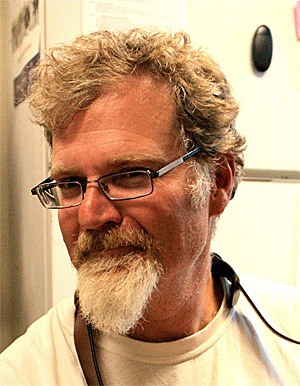By DAN PEDERSEN
Special to the News-Times
Two per day.
That’s how many cookies the average person eats during the Thanksgiving to Christmas holidays, according to a University of Washington researcher who follows those cookies all the way to Puget Sound, tracing the seasonal spike in cinnamon and vanilla compounds entering marine waters.
Dr. Rick Keil and his students, with the help of SoundCitizen, track several benign substances that reveal the daily activities of humans as they impact local waters. The community-based water sampling network studies fun compounds such as cooking spices and also more serious ones such as emerging pollutants.
Keil will share the group’s findings Saturday, Feb. 5, when he delivers the keynote at the annual WSU Beach Watchers’ Sound Waters event, to be held this year at South Whidbey High School near Langley. Registration opens Friday, Jan. 7 online at http://beachwatchers.net/soundwaters and continues through Friday, Jan. 28. But the most popular classes fill fast and many people mark their calendars to pounce on the opening day sign-up.
Attendees pay $40 to register for the day’s classes, plus $7.50 for an optional box lunch. Registration covers the keynote speech plus any three classes from among some 65 running the gamut.
The South Whidbey venue is a new one for the popular one-day university. Why the switch from Coupeville?
“It’s an experiment,” said publicist Mary Hulbert of Coupeville. “We wanted to see what would happen. South Whidbey High School offers a large auditorium that will accommodate our entire keynote audience without having to pipe the speech into a spillover room. And the audio-visual tech capabilities are impressive.”
But getting back to those cookies . . .
The professor says cookie consumption peaks every year about Dec. 13, judging by the daily volume of spices flowing into Puget Sound from wastewater treatment facilities. He thinks he knows why.
“We wonder if this is because of the numerous office parties and holiday parties that occur about two weeks before the holiday.” Cinnamon and vanilla levels remain elevated until New Year’s and then decline. Keil’s lab also tracks such spices such as all-spice, thyme, rosemary, as well as caffeine – a good marker for coffee – and theobromide, the “feel-good” compound in chocolate.
Keil concedes some people wonder if it makes sense to track spices. He believes it does. “Isn’t it refreshing to hear about something that is not bad for the environment, but that shows how linked we are to our natural world?” he asks. “Using spices, we can show how rapidly the marine world sees the activities of our daily lives, bringing home the message of a connected world. The bottom line: when we take care of our own health, we also indirectly can take care of the health of the world in which we live.”
Keil is the director of the Aquatic Organic Geochemistry Lab and a professor of Chemical Oceanography in the University of Washington’s School of Oceanography.



